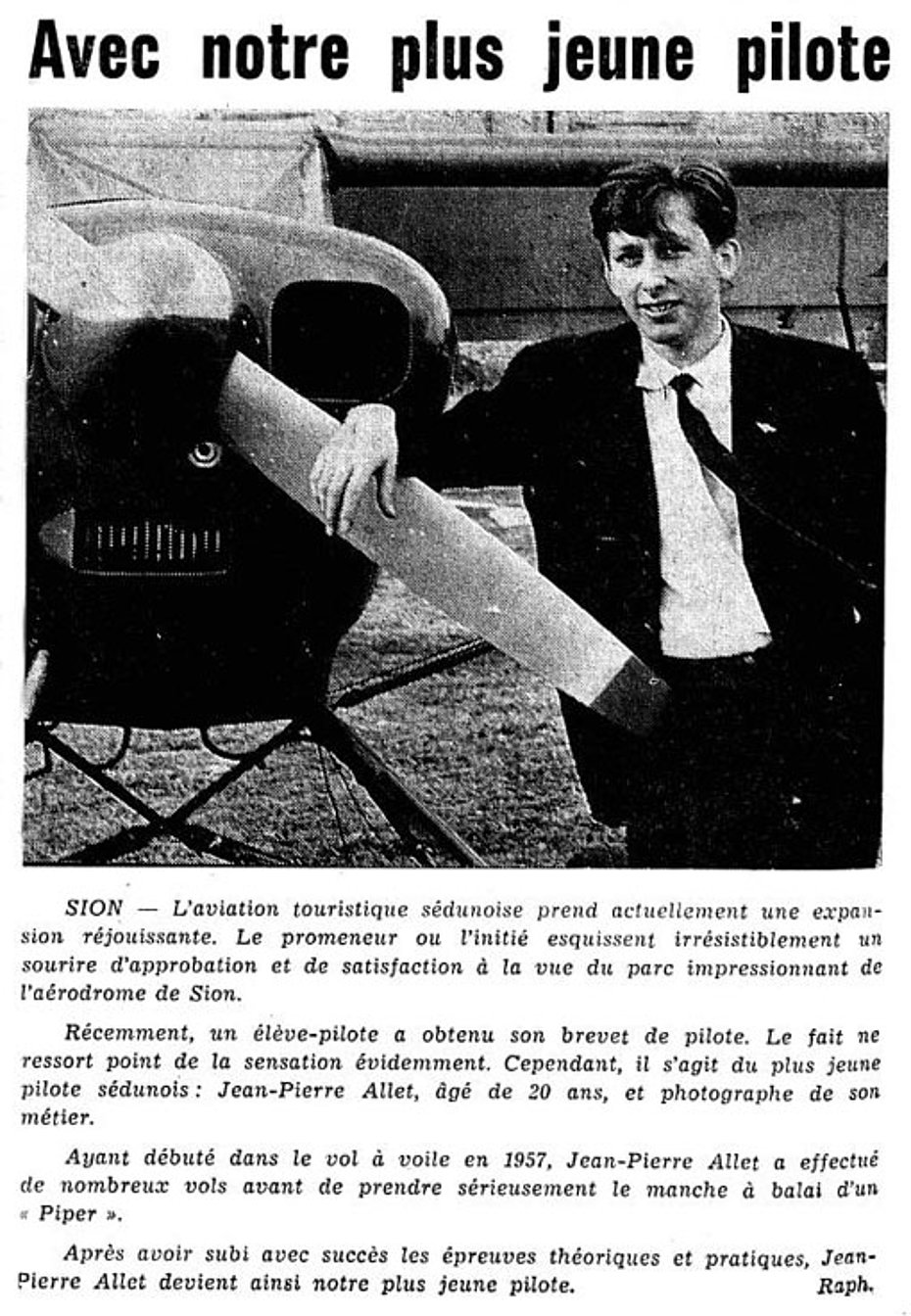
Allet Jean-Pierre
Allet Jean-Pierre
On June 7, 1968, the Swiss newspapers announced the untimely death of the youngest helicopter pilot in Switzerland. Jean-Pierre Allet who on that day would have turned 23. The young boy had hit the cable of a cableway in the region of Oberalp Pass.
Jean-Pierre Allet was born in Sion on June 7, 1945. Following primary and secondary school he entered College in Sion where he attended at first the classical section and later the commercial section.
Since childhood he was fascinated by aviation and like many of his peers he had a dream: to become a pilot.
Therefore at the age of sixteen during the summer holidays he worked as a bellboy in Mayens-de-Sion trying to earn some money to achieve the glider pilot license.
At the age of seventeen, after completing the glider course he obtained his license. That year following the advise of Hermann Geiger (a glaciers pilot very popular in Switzerland in the 1950s and 1960s) he began an apprenticeship as a photographer, because "a second job in addition to the pilot license is always helpful".
Later he began the training as airplane pilot on the Piper Cub along with Hermann Geiger who became his mentor until the latter’s tragic death on August 26, 1966.
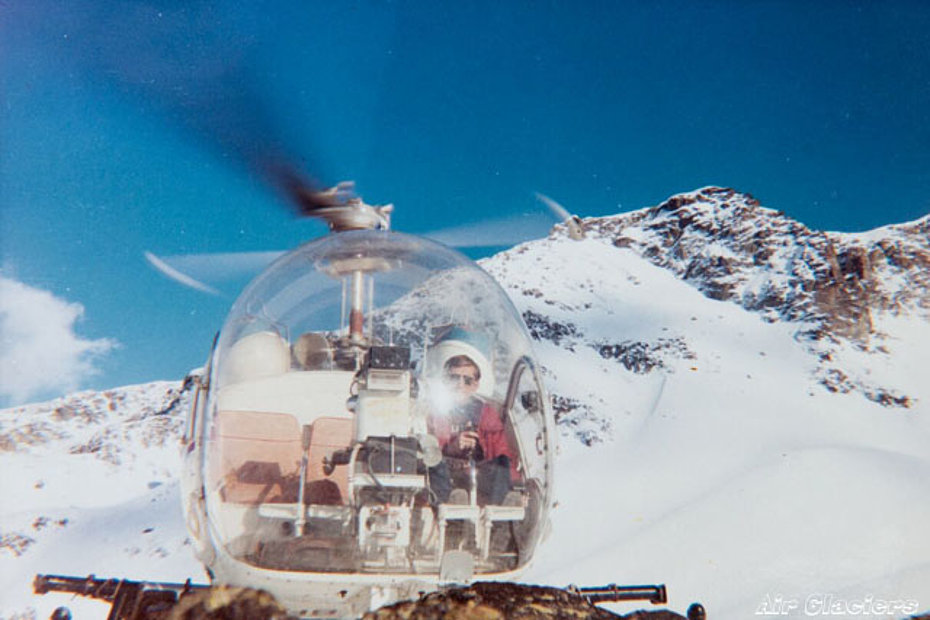
Helicopter pilot
Encouraged by the results, a few weeks before the Glaciers pilot’s death Jean-Pierre Allet had decided to start his helicopter pilot training. He began the pilot course in Geneva using the Hughes 269B HB-XCC in service with the Aéro-Club Suisse, Section de Genève. The young pilot made his first instruction flight on August 15, 1966 with Jean Baer.
Subsequently, in order to obtain the commercial pilot license he moved to Belp/BE where he attended a pilot course organized by Heliswiss during which he flew the helicopter of the (Agusta-) Bell 47G series.
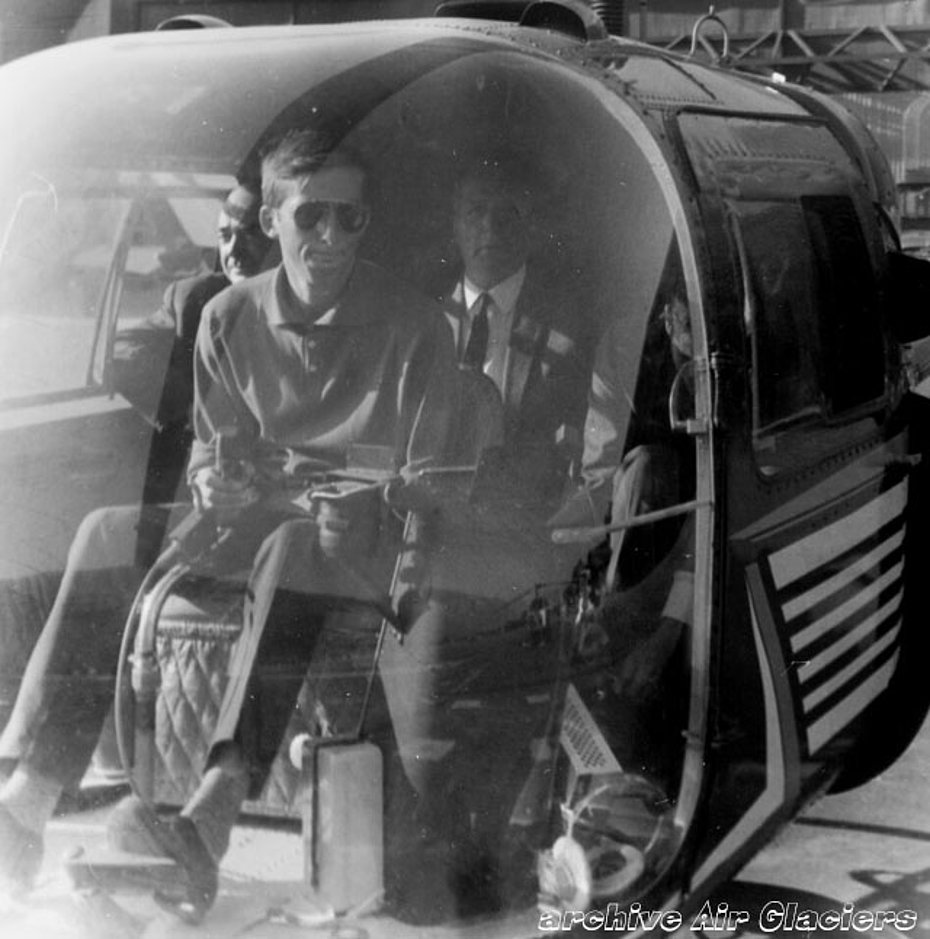
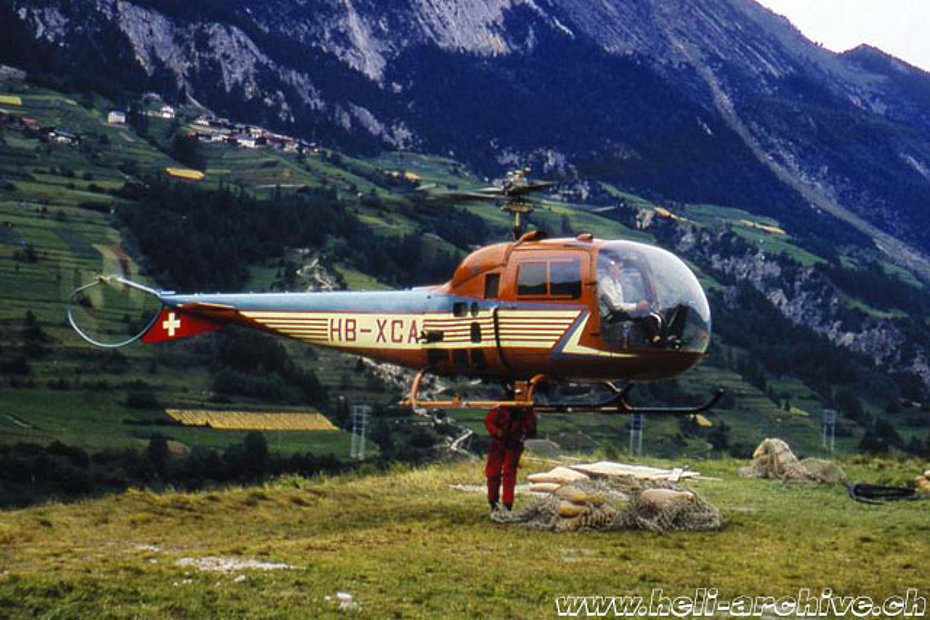
On June 27, 1967 the Federal office of civil aviation granted him the helicopter commercial pilot license nr. 112. That same summer Jean-Pierre Allet was hired by Air Glaciers as a commercial pilot. Because of his young age, he was nicknamed "Petiot", a French term used affectionately for all that is small (or young).
Following the valuable advices of Fernand Martignoni and Bruno Bagnoud (founder and deus ex machina of this historic Swiss helicopter company) the young man began his activity: he started with the transport of people and building materials, followed by search and rescue missions at high altitude in the Swiss Alps.
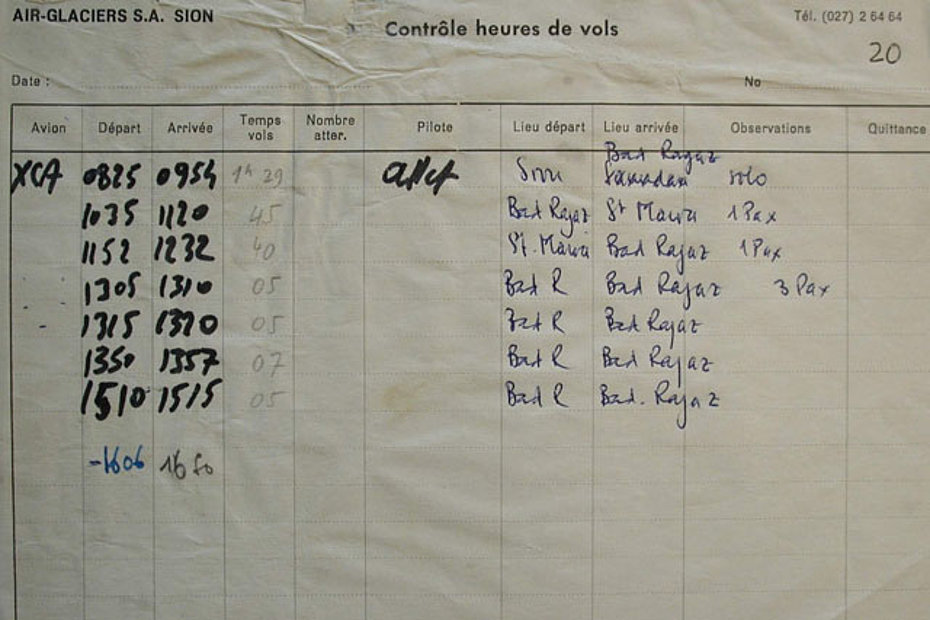
Showing great tenacity on November 7, 1967 he also obtained the professional airplane pilot license nr. 887.
In February 1968 he was victim of a car accident that forced him for a time to suspend his flying activity.
The helicopter accident
On June 6, 1968, the Swiss Air Rescue Guard (SARG) organized a meeting at the airfield of Bad Ragaz/GR with the purpose to show the various aircraft used for search and rescue operations and take delivery of a new airplane.
Along with other pilots Bruno Bagnoud and Jean-Pierre Allet were also invited to attend the meeting.
In the afternoon, after some local flights, the young pilot took off with the intent to return to Sion.
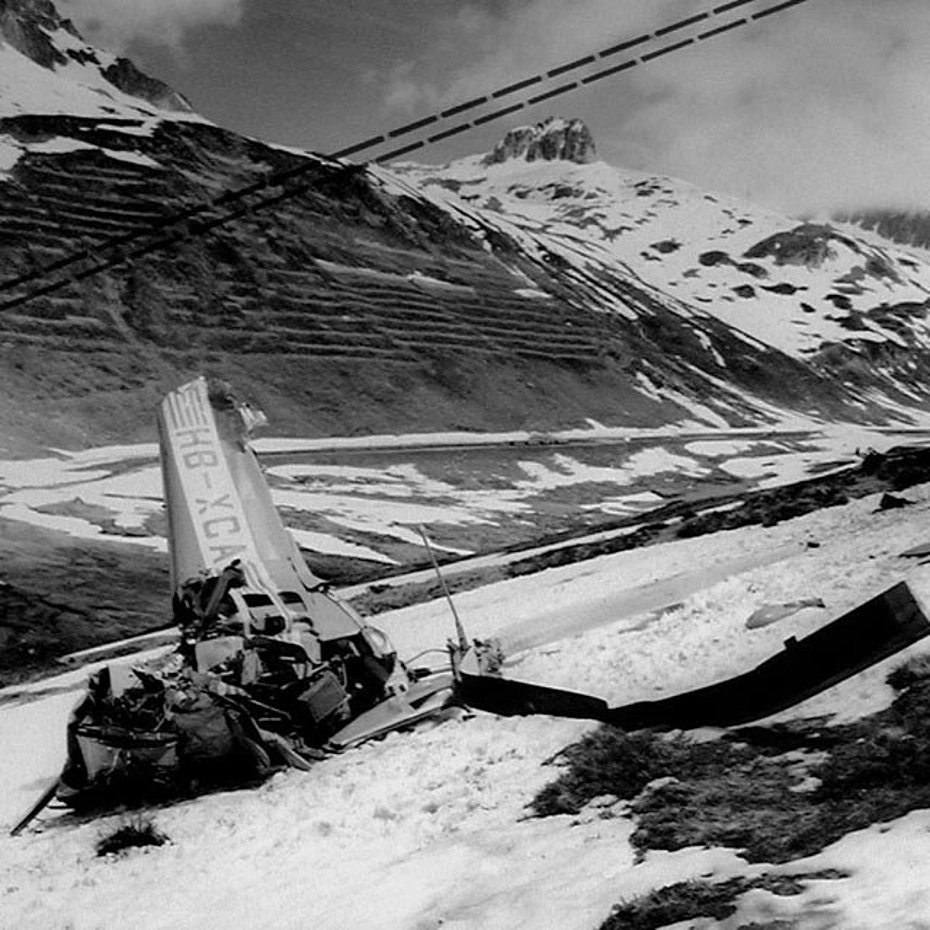
Bagnoud, who took off later, spotted the Agusta-Bell 47J3B-1 before the mountain village of Disentis/GR. He was surprised to see the helicopter flying extremely low in the direction of the Oberalp Pass, and therefore he contacted Allet telling him by radio to climb immediately as there were several obstacles to air navigation in this region. Allet confirmed the reception of the message and did a turn to gain altitude, then Bagnoud being faster lost the visual contact.
Later several witnesses who were on the west side of the Oberalp Pass after noticing the passage of the Alouette III were again distracted by the arrival of Agusta-Bell 47. The regular noise of the helicopter suddenly became unusual. The helicopter had indeed just hit the Pazola’s cable car cables and fell to the ground.
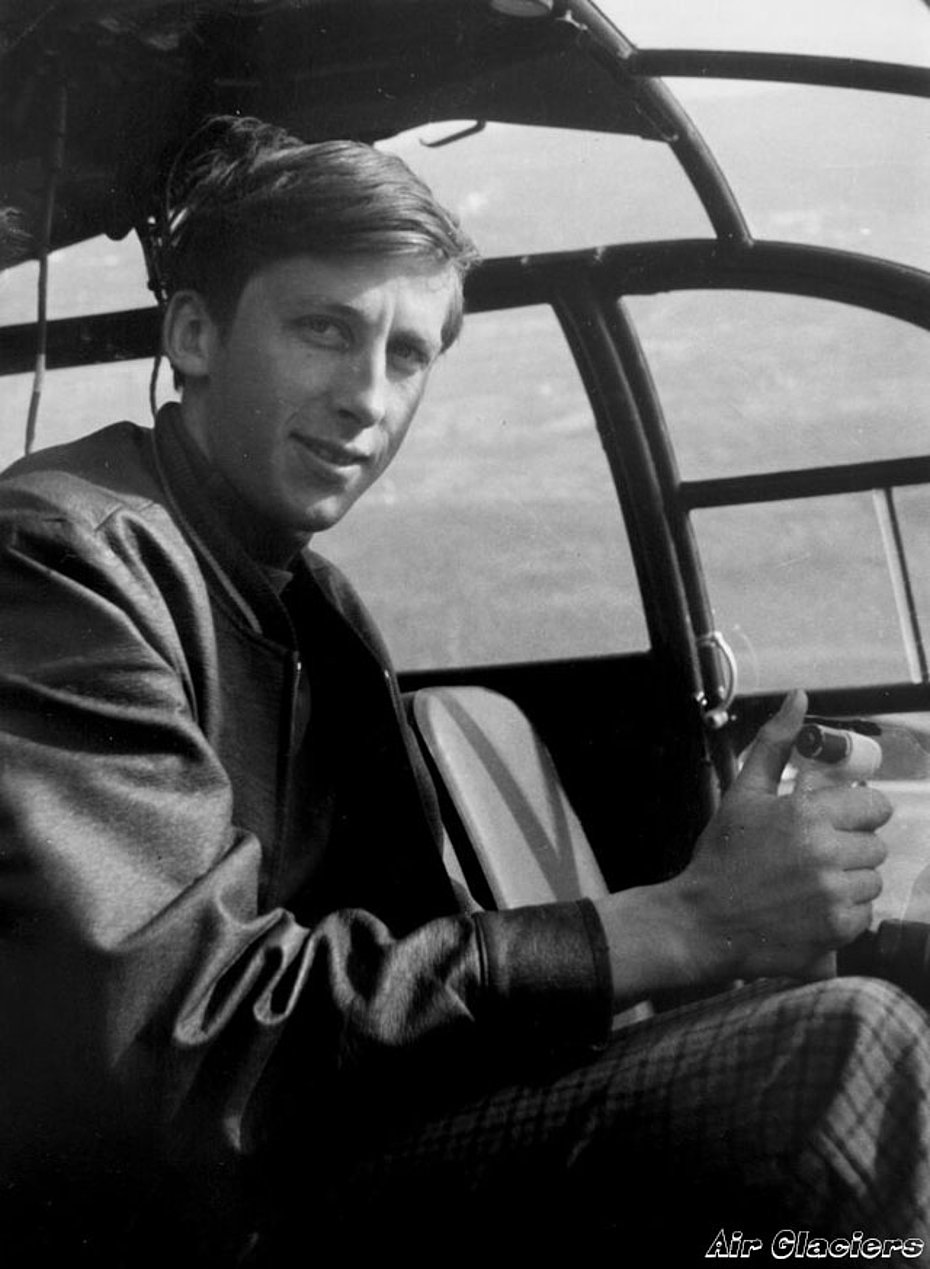
In the accident the young pilot was fatally injured. His body was transported to Andermatt and the next day to Sion by Bagnoud. At the airport there was a small group of co-workers and family members waiting. After the arrival of the helicopter the secretary placed a flower on the coffin. For everyone present this was a very moving moment.
At the funeral celebrated in the Cathedral of Sion, many people attended the ceremony to say goodbye to “Petiot” for the last time.
Minimum safe altitude not observed
The Swiss Transportation Safety Investigation Board in its report published on February 3, 1969 reports that the helicopter at the moment of the impact with the cables was flying too low, at an altitude of about 40 meters instead of at least 150 meters as prescribed.
Bruno Bagnoud remembers "That accident touched us all deeply. It was a tremendous blow: the death of Hermann only two years before, and now Jean-Pierre, how sad”. Unfortunately that year the young company suffered another tragic loss a few months later. Armand Geiger, Hermann’s nephew who was the chief mechanic of Air Glaciers and also an aeroplane pilot, died in an aviation accident not far from the airport of Sion.
At the time of the accident Jean-Pierre Allet had a total flight experience of 447h10’ of which 217h in helicopters. The majority of them where logged at the controls of the Bell 47 series. In addition to this helicopter type he was also qualified to fly with the Hughes 269B used for primary training in Geneva.
A memorial in his honour was placed near the point of the fatal accident.
In 1972 in order to keep alive the memory of the son, his family created a fund at the municipal library of Sion to buy books and magazines related to the aviation world.
The Belgian Academic Order of St. Michael awarded him posthumously the title of Officer of the Order in memory of his rescue missions.
Special thanks
I want to express my gratitude to the team of Air Glaciers who provided some pictures used in this article.
HAB 08/2016

